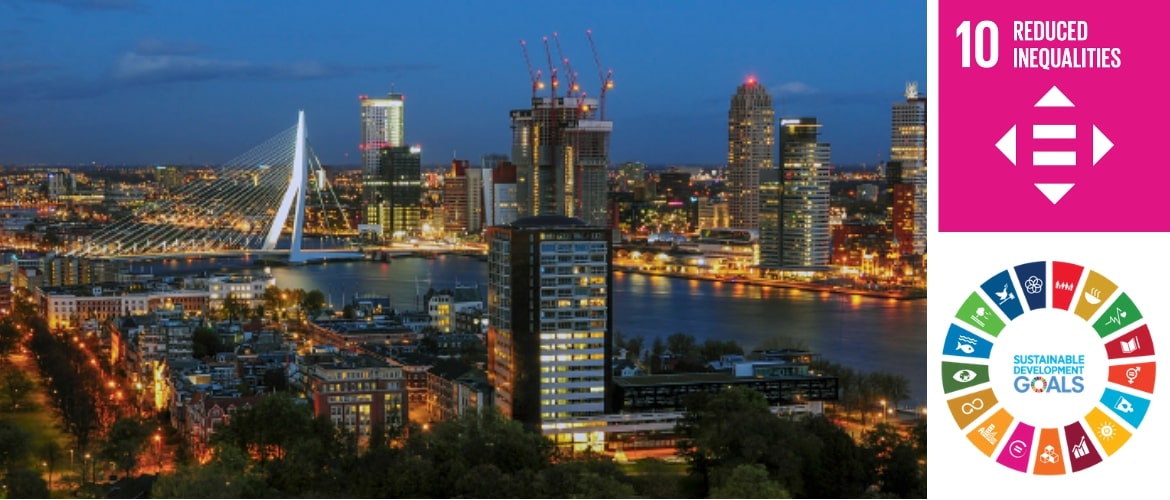The case looks at the complex issue of inequality in Rotterdam, the Netherlands, and how a wider collaboration between all stakeholders could help build a more equal and inclusive society – a challenge that could be applied to most modern cities in the world. Inequality was closely linked to poverty in Rotterdam; the municipality’s poverty rate was the highest in the Netherlands.

Inequality and segregation in the city were characterised by high unemployment, a high density of manual workers and low educational attainment. While some government interventions promoted equity by taxing those at higher income levels and redistributing welfare benefits to those on lower incomes, national policy on possible solutions increasingly tended towards encouraging collaboration between all societal stakeholders involved.
Three organisations — JINC (non-profit), Voor Goed (government-partnered) and Coca-Cola (corporate) — were aware that addressing inequality not only involved big challenges (securing the financial resources to scale up, creating poverty awareness, keeping social entrepreneurs in the city, measuring the impact, etc.), but that it also represented huge opportunities to build partnerships and foster collaborative ways of working. Though the three organisations had different perspectives, business models and challenges, they shared one aim. How could they succeed in their ambitious goal?
The case is part of the Sustainable Development Goals (SDGs) case series, developed by Rotterdam School of Management (RSM), Erasmus University. Focused on SDG 10 (Reduced Inequalities) and SDG 17 (Partnerships for the Goals), this case is also related to SDG 1 (No Poverty), SDG 4 (Quality Education) and SDG 8 (Decent Work and Economic Growth). Video learning materials and other resources about these SDGs are available at www.rsm.nl/sdgs.
Learning objectives
1. Describe the variables connected to the problem of inequality in Rotterdam and other cities with similar conditions;
2. Identify the stakeholders involved in addressing inequalities;
3. Create a plausible collaborative strategy that addresses the inequality gap by considering the funding, marketing & communication, and impact measurement;
4. Discuss how different SDGs are related to inequality and how to address them.
Target audience
This case is targeted at Master students (MSc or MBA) and executive students of sustainability, strategy, and leadership. It can also be used for teaching general management or social studies.
Authors
-
Paula Arellano Geoffroy
-
Tao Yue
Keywords
Rotterdam; developed country; urban; poverty; inequality; business; government; NGO; immigration; job; education; income gap; social entrepreneur
Teaching note
Request a teaching note via cdc@rsm.nl